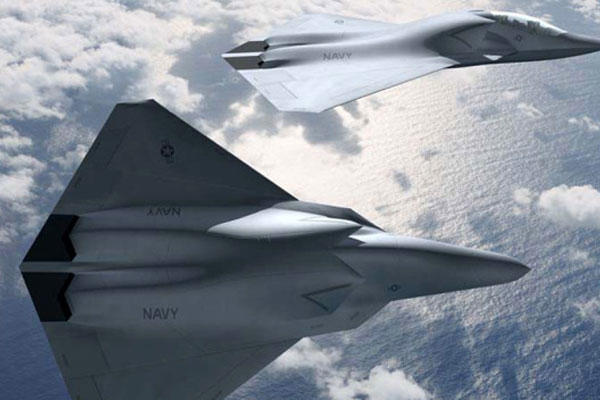Navy Secretary Ray Mabus said the F-35 Joint Strike Fighter will likely be the last manned strike fighter ever bought or flown by the Navy.
"Unmanned systems, particularly autonomous ones, have to be the new normal in ever-increasing areas. For example, as good as it is, and as much as we need it and look forward to having it in the fleet for many years, the F-35 should be, and almost certainly will be, the last manned strike fighter aircraft the Department of the Navy will ever buy or fly," said Mabus, speaking to the Navy League's 2015 Sea Air Space symposium at National Harbor, Md.
Citing unmanned systems as a key element of needed innovation in a fast-changing global technological environment, Mabus said he plans to stand up a new Navy office for unmanned systems and appoint a new Deputy Assistant Secretary of the Navy for Unmanned Systems. The new office, called N-9, will seek to streamline various unmanned systems efforts and technology, Mabus told the crowd.
Mabus specified 3-D printing as an example of encouraging progress in innovation, holding up a small hand-held drone called the Close-In-Autonomous Disposable Aircraft, or CICADA.
"This Close-In Autonomous Disposable Aircraft can be made with a 3-D printer, and is a GPS-guided disposable unmanned aerial vehicle that can be deployed in large numbers to 'seed' an area with miniature electronic payloads, such as communication nodes or sensors," he said.
"The potential for technology like this- and the fact that we can print them -- make them – ourselves, almost anywhere, is incredible. This is going to fundamentally change manufacturing and logistics, not just in the Department of the Navy, but also in the entire U.S."
The creation of a new Navy UAS office could carry implications for a handful of high-profile developmental programs for the service. For instance, it could impact the ongoing debates about needed requirements for the Navy's carrier-launched drone program, the Unmanned Carrier-Launched Airborne Surveillance and Strike program (UCLASS).
Some members of Congress are demanding the platform have maximum stealth and weapons capability so the drone can penetrate advanced enemy air defenses and deliver weapons as well as conduct long-range intelligence, surveillance and reconnaissance, or ISR, missions.
In addition, Mabus' comments seem to indicate that the Navy's conceptual developmental effort to envision a new carrier-launched fighter to replace the F/A-18 Super Hornet – called the F/A-XX program – may wind up engineering an unmanned platform for the mission.
Rep. Randy Forbes, R-Va., Chairman of the House Armed Services Seapower and Projection Forces subcommittee, told Military.com he supported Mabus' announcement to create a new UAS office and Deputy Secretary of the Navy for Unmanned Systems.
"Creating a senior post focused on unmanned aviation is an important recognition by the Navy that this technology will do much to determine the service's future and requires senior leadership within the Department to ensure its successful utilization. The future of the Carrier Air Wing is linked with the development of an unmanned system able to execute long-range, penetrating strike missions in anti-access environments. I am hopeful that whoever fills this new post will take a holistic, strategic look at the Navy's unmanned portfolio and be a strong advocate for that vision moving forward," Forbes said in a written statement.
-- Kris Osborn can be reached at Kris.Osborn@military.com.




























